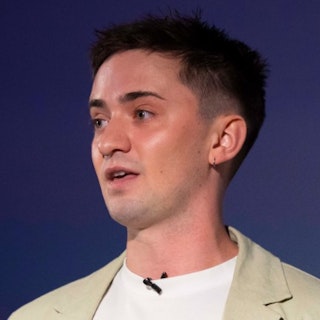Are ‘fake ads’ helping or hindering the advertising industry?
System1’s Andrew Tindall got into hot water over the weekend for critiquing a ‘fake ad.’ Here, he explains why they can actually help marketers make better work.
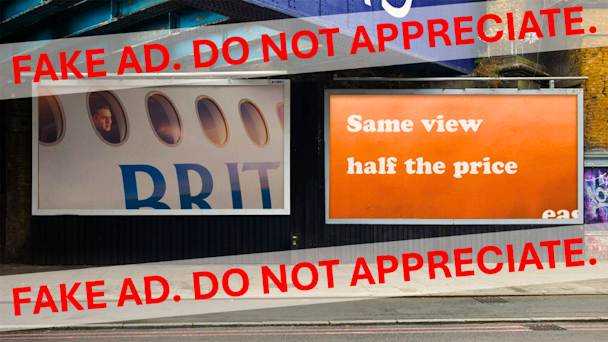
/ Uncommon Creative Studio’s REAL work and Tom Birt’s horribly fake work that we should 100% not appreciate or celebrate
I shared a ‘fake ad’ on my LinkedIn on Saturday. The post discussed an ‘easyJet reaction’ to the new British Airways campaign from the brilliant Uncommon Creative Studio. After taking the weekend off my emails and phone, I was surprised that it reached 200,000 people on LinkedIn, garnering about 150 very lively comments.
The room was very much split on whether I should have shared it. What’s clear is that we appear to have reached peak’ fake ad.’
There are about six strong POVs I’m going to go through today. While I’m also torn on whether we should share fakes, I do believe they can clearly help the industry. One of my favorite recent campaign ideas came from a student project. Take a look at these mock-ups, but be very careful not to appreciate them.
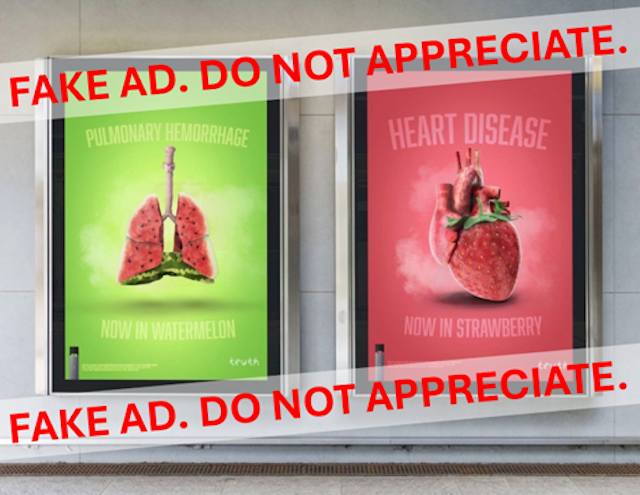
There are multiple issues around these ads, but you cannot deny they have a place in our industry. So, let’s review my feedback on this specific post.
1. It’s a ‘scam ad’/misinformation
This accusation is possibly the most extreme POV as it implies ill intent in sharing it. Creatives who mock these up to show their skills (in this case, the fantastic Tom Birts) never claim to work for the brand and never pretend it’s real. They are also not trying to trick anyone into doing anything. Calling this a scam seems... a stretch.
2. It’s a ‘fake ad’/cheating
Peter Bray, founder of Bray & Co, has a point that’s hard to disagree with.
Most of the work in advertising goes into actually selling the idea to the client, getting funding and getting it past legal into a media channel. However, we see brands like SURREAL sign this stuff off weekly to get earned reach.
Brands doing this for PR is weirdly similar to an AI ‘fake video’ that we all seem to love as well - think, viral AI eyelashes on a tube carriage. These both involve brand-side marketers signing the idea off, funding it, and choosing to put it into a (digital) media channel.
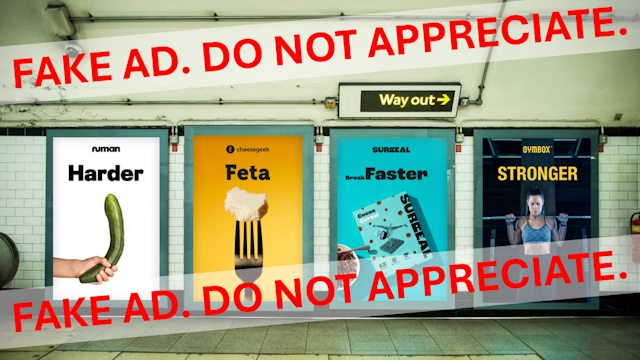
So, do we just hate it when it’s a solo creative having some fun and not getting sign-off?
Do we also hate it when a brand has been involved, funded it, and signed it off?
Or do we only hate it when it’s not been put into a traditional media channel or printed off and put on a wall to take a picture for social/PR?
Because the latter ignores the resources involved to pay a creative and PR team to develop and share these campaigns.
3. This is bad for Out of Home
I think about this one a lot as I partner with some very large OOH owners. Part of my job is, well, to help grow OOH. And I take it personally – I LOVE OOH and spend a lot of time researching it and finding data to argue for its use in campaigns.
Here, we have to lean on the great research from Richard Kirk, EssenceMediacom and Burst Your Bubble on signaling theory. Basically, the idea is that the media channel is the message.
Hundreds of years’ worth of exposure to different media channels means consumers understand how they are used. And each one says something different about the brand. Is it doing well? How do your friends react to this sort of advertising? Excessive spending means you clearly have energy (money) to waste, like Darwin’s issue with the Peacock and its massive tail.
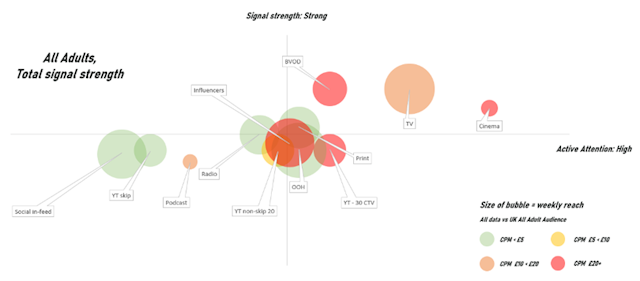
By creating a fake image of OOH, you are sort of stealing from the trust and equity that OOH has invested over the years. Obviously, to a lesser extent, as it’s an image. Seeing these digital ad concepts ironically reminds of us the “power of real,” and the great, very-real work Lee Bokfin and Ben Fishlock do at Global Street Art.
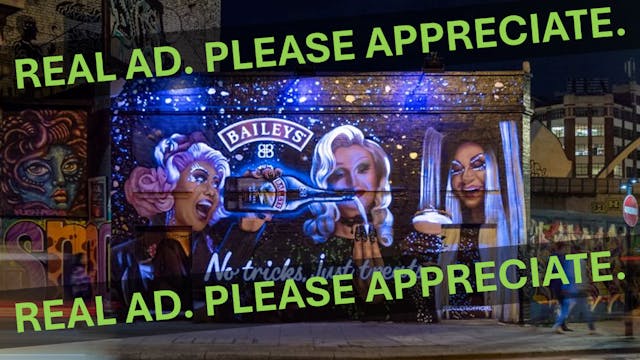
This is where I disagree with most people here and actually think that viral spec is good for OOH. It shows what’s possible in the channel and gives triumph a chance. Also, let’s go all marketing on marketers for a second – the segment of marketers who will sign off on a £5,000-10,000 fake ad digital/PR activation are not the same marketers who will spend £200,000 on an OOH campaign. It isn’t stealing from the channel.
I’d go a step further – it’s the most brilliant, targeted campaign to grow OOH. Over 200,000 marketers have seen my easyJet post, which is chock-full of OOH creativity that follows the best practices that I’ve shown to work in the channel with JCDecaux.
Isn’t that the textbook description of a broad-reach campaign to advertise the use of OOH to marketers?
4. They unfairly circumvent ASA and the other rules marketers have to play by
True, and very fair. Look at the recent Nationwide campaign that is 1,000% genius.
For all that investment that went into it, it was just to be banned by the ASA. It’s all rather brutal. JCDecaux would never sell a next-door 48 sheet to a competing brand. It’s unethical. Yet in fake adland you can essentially do what you want, with little repercussions.
5. A research company shouldn’t be touching ad concept work
I work for System1, an effectiveness platform that predicts the effects of advertising. Some people worry that me posting digital ad mock-ups is credibility-ruining.
Well, I hate to break it to you - but we do our best work with ad mock-ups. TV storyboards, mocked-up OOH ideas, and radio ads read by the brand managers themselves. That’s when you should test. To understand an idea in its early stages so you can make it better before you make that big investment.
I guess this may be why I’m more pro-fake ad than most. Sharing this kind of bold concept work and showing proxy measures for how it would fare in the real world should help agencies sign off bold creative thinking. Not the opposite.
6. Creative should know better than using a brand’s IP without sign-off
This brings me to my final point, one that, surprisingly, no one has shouted at me via direct message (yet). [Andrew’s LinkedIn profile for your DMing ease].
A creative (that I won’t name) created a viral reactive Burger King ad idea when the altered image of Kate Middleton caused a PR storm. I even shared it on my LinkedIn. The trouble is, the news then broke about her health issues. That creative suddenly became extremely problematic for Burger King, yet the brand had nothing to do with it. When creatives take a brand’s IP, they could get into legal trouble. And quite rightly. This almost totally negates any benefit of a creative doing something like this. It could all go horribly wrong rather fast.
So, what’s the conclusion?
I don’t have a clue.
I respect creatives who come up with these ideas and do a half-decent job of getting a concept to an almost-publishable level of quality.
We should continue to applaud their genius.
We should also respect the cogs of our industry: convincing the client, executing to a budget, and getting your square idea through legal without it turning into a circle.
The entire creative process is an art.
So, the least those in the know can start using the words “concept” or “idea” above the fold on LinkedIn as an acknowledgment that these need judging differently to “real work.” Then maybe we can all start appreciating bold creative work for what it is and use this as an excuse to bring it to clients more often.
But let’s be realistic. LinkedIn is the Wild West. Clearly, paid-for promotions are going undeclared. “Pods” of people agree to comment and share each other’s stuff to beat the algorithm. Aggressive comments on bright-eyed and bushy-tailed young marketers’ posts sharing their new work. Posts get ripped off and copied without credit for a few likes. People are always going to take these images and post them without context. And sometimes that even means posing a fake ad as real for likes.
I’m afraid this is the new marketing world we live in. Having joined the industry post-90s, I’m often left thinking that we’ve been dealt a bit of a shit hand, haven’t we? I hear stories of the advent of broadcast TV, creative legends, and long creative lunches - and I admittedly swoon. Sure, that came with the odd ash-laden typewriter, but I’ll take that over trying to explain prDOOH + DCO to someone any day of the week.

